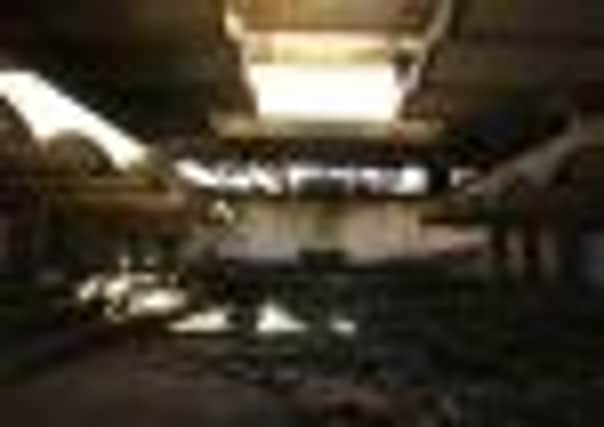How to turn an abandoned building into an ‘invisible college’
This article contains affiliate links. We may earn a small commission on items purchased through this article, but that does not affect our editorial judgement.


Regularly cited by architecture spotters as one of the greatest late-modernist buildings in Europe, it’s a ghost space now, long since abandoned from its original use as a priests’ training college and a short-lived latter life as a drug rehab centre.
Since the late 1980s it has existed only in the public consciousness through Murray Grigor’s formal 1972 documentary on the place, a spectral meditation on priests moving through its brutalist corridors.
Advertisement
Hide AdAdvertisement
Hide AdMany of we followers of its legend are happy to believe the building’s reputation is well deserved, but we want to experience something of what apparently made it one of Scotland’s finest examples of post-war architecture, rather than merely reading about the ziggurat lighting panels on the roof which cast hard, heavenly shadows onto the priests as they said mass. And help is finally at hand.


Following their high profile participatory public artwork Speed of Light, staged on Arthur’s Seat as part of this year’s Edinburgh International Festival, public arts organisation NVA’s plans for the site will be unveiled at an exhibition opening in Glasgow next week, alongside Grigor’s original film and a shot-for-shot 2009 remake which reveals the disintegration of the space.
The Seminary was designed by Andy MacMillan and Isi Metzstein of Glasgow architects Gillespie, Kidd & Coia, renowned for their range of iconic modernist churches and university buildings until the firm’s closure in 1987. Despite an A-listing from Historic Scotland and inclusion on the World Monument Fund’s Hundred Most Endangered Sites list, the building is now a shell. However it’s precisely this decrepitude which NVA, together with architects ERZ and Avanti, wish to exploit.
The intention, says NVA’s creative director Angus Farquhar, isn’t to stage a redevelopment potentially running into the tens of millions, but rather – with the support of the Scottish Government and various private backers – establish what NVA call the Invisible College, based upon the ideas fomented by 17th century philosopher Robert Boyle.
Redeveloping the chapel at the heart of the seminary but leaving the rest of the building as it is, NVA believe the site can be used as one of “inquiry and investigation”, involving academics (the Universities of Edinburgh, Glasgow and Strathclyde are already supporting the project), artists and local people in projects and field trips which explore the particular history and resonances of the site. This “recycling” of the space will also open it up to use for site-responsive performances and exhibitions.
“You’d be used to seeing buildings like this by Le Corbusier in the south of France,” says Farquhar, “but it’s rare for a piece of bold, brutalist modern architecture to appear in a rural setting in the west of Scotland. For many people it represents a spirit that we don’t see enough of in Scotland, and the loss of it has been seen as a potential national disgrace.”
He quotes a target fundraising figure of five million pounds to complete the project which, in hard times, seems like a radical solution to a mistreated architectural highlight and an innovative statement that architecture and finance need not necessarily go hand in hand.
Advertisement
Hide AdAdvertisement
Hide AdNVA’s plans for Kilmahew Woodlands and St Peter’s Seminary will be on display at the Churches in the Modern World exhibition at the Lighthouse, Glasgow, 3 September until 12 October. www.nva.org.uk, www.theinvisiblecollege.org.uk